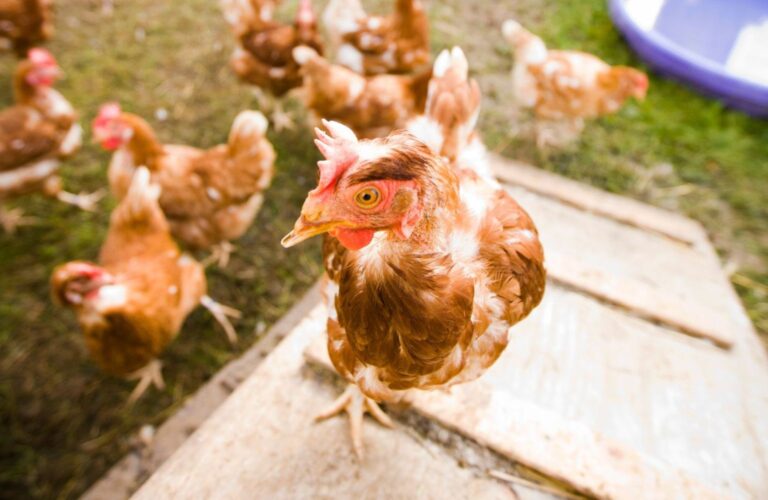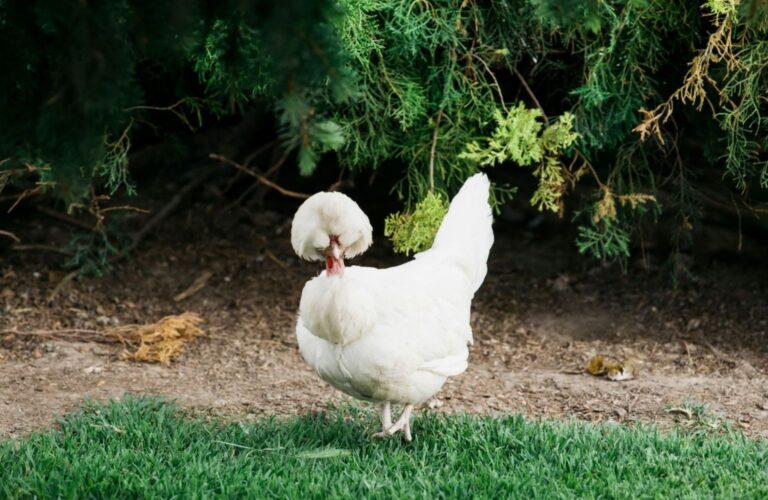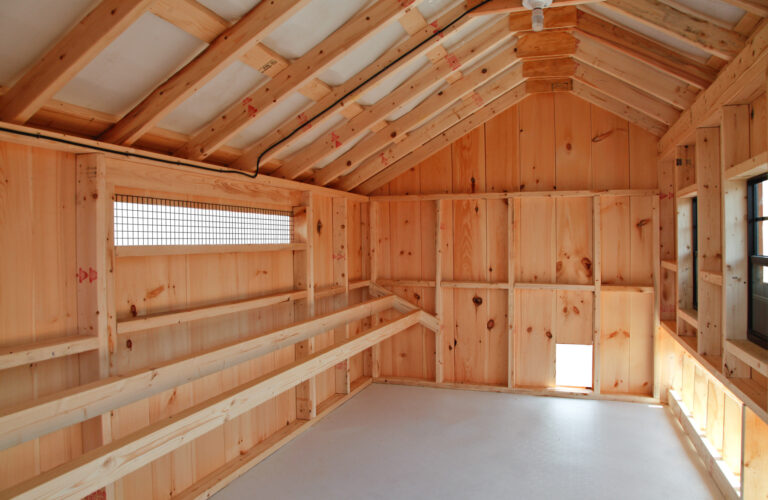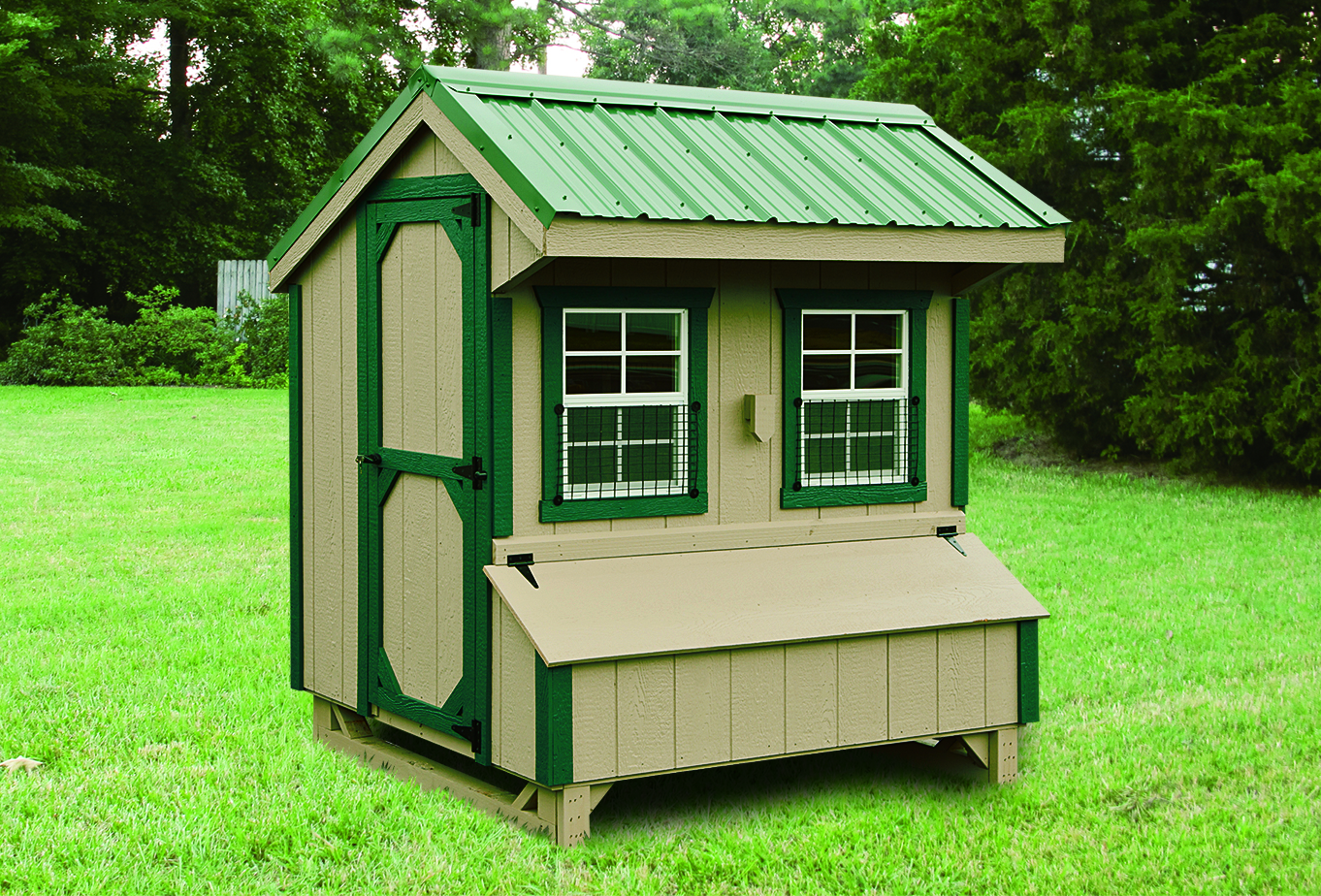
What makes the inside of a chicken coop a healthy home for your chickens and a place that they’ll love to come back to every night? Here, we’ll explore 8 interior features of a chicken coop to discover why each feature is important and how it contributes to the health and safety of your chickens.
So, what should be inside a chicken coop? Let’s take a look at some essential features.
Roosting Perch
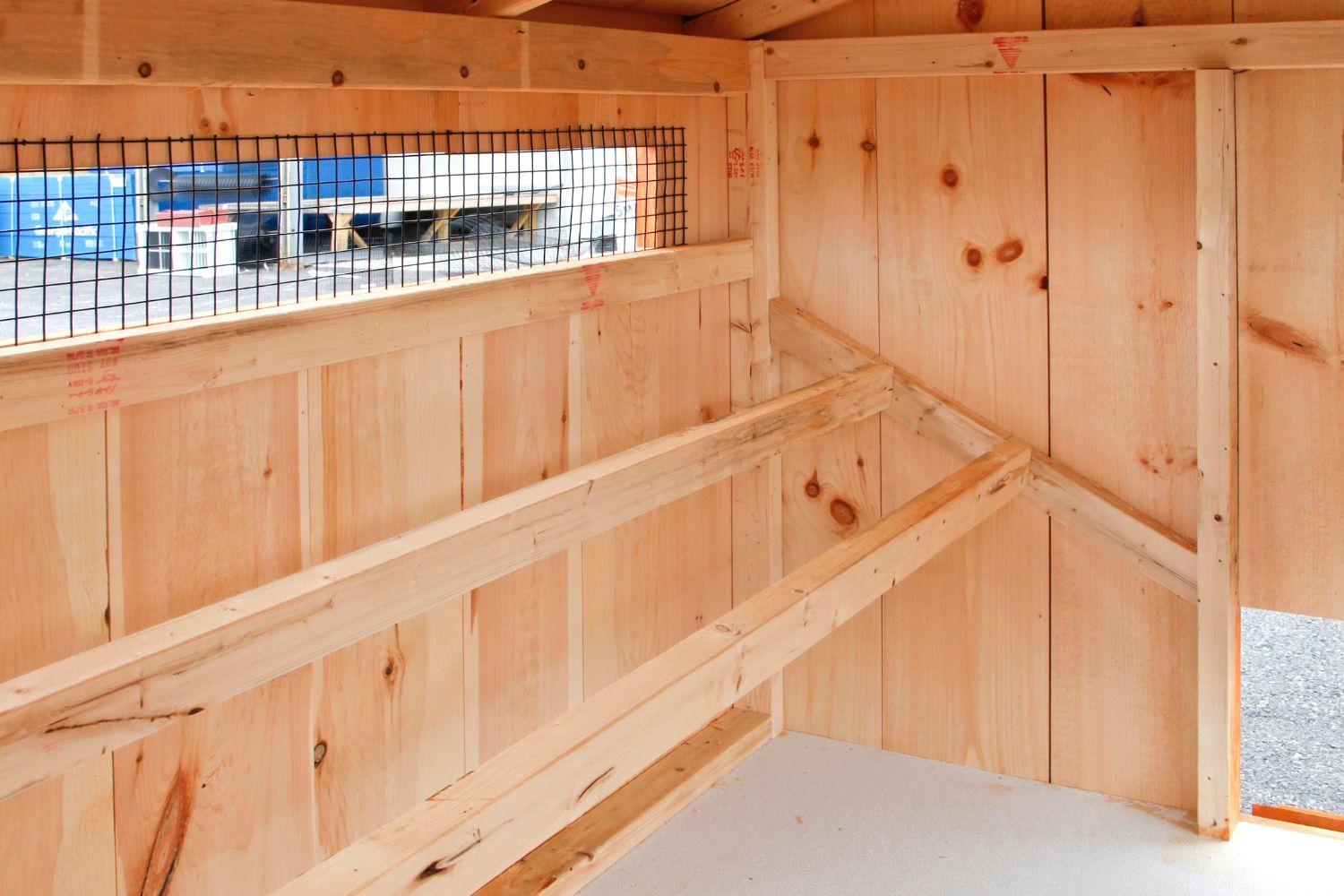
One of the most important things to have inside an A-frame chicken coop or any coop is roosts for your chickens. Chickens sleep best in the air, so providing a roost for your chickens inside the coop is very important. In unprotected environments, chickens sleep on roosts to protect themselves from predators.
Although this isn’t necessary for a closed coop, sleeping on a roost keeps chickens off the floor, where they are more susceptible to bacteria and disease. Roosts should be constructed from a material such as wood rather than metal or PVC.
Roosts should be installed higher than the nesting boxes since chickens will usually seek out the highest perch for sleeping. Depending on the height at which you set your roosting perches, you may need to install a chicken coop ramp so your chickens can easily access their resting spot.
A sturdy roost that is large enough to accommodate all the chickens is one of the most important interior features of a chicken coop.
Nesting boxes
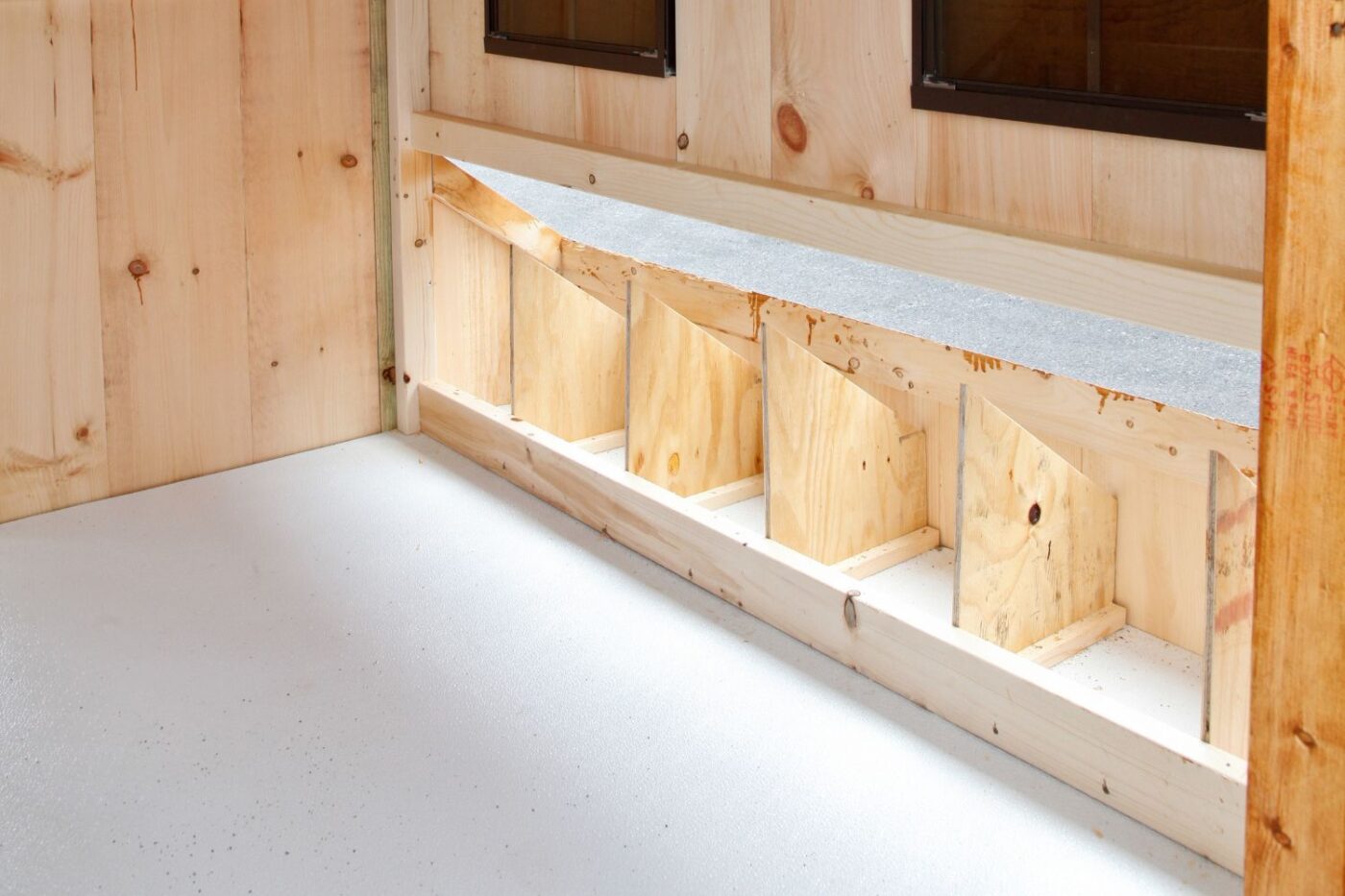
The inside of a chicken coop should always have nesting boxes for your laying hens. Nesting boxes provide a quiet place for your chickens to lay eggs and a convenient place for you to find the eggs in time for breakfast.
The nesting boxes should be kept as dark as possible and installed lower than the roosting bar to prevent chickens from pooping in them. Recommendations for how many boxes should be provided per chicken vary, but a safe guide is 4-5 chickens per box. The boxes can be lined with a dry bedding material such as wood shavings or chopped straw, which should be changed periodically to prevent the buildup of harmful bacteria.
Chickens prefer to nest and lay eggs in soft bedding, but they should not be sleeping or loitering in the boxes for very long. Nesting boxes are provided solely to lay eggs.
Insulation
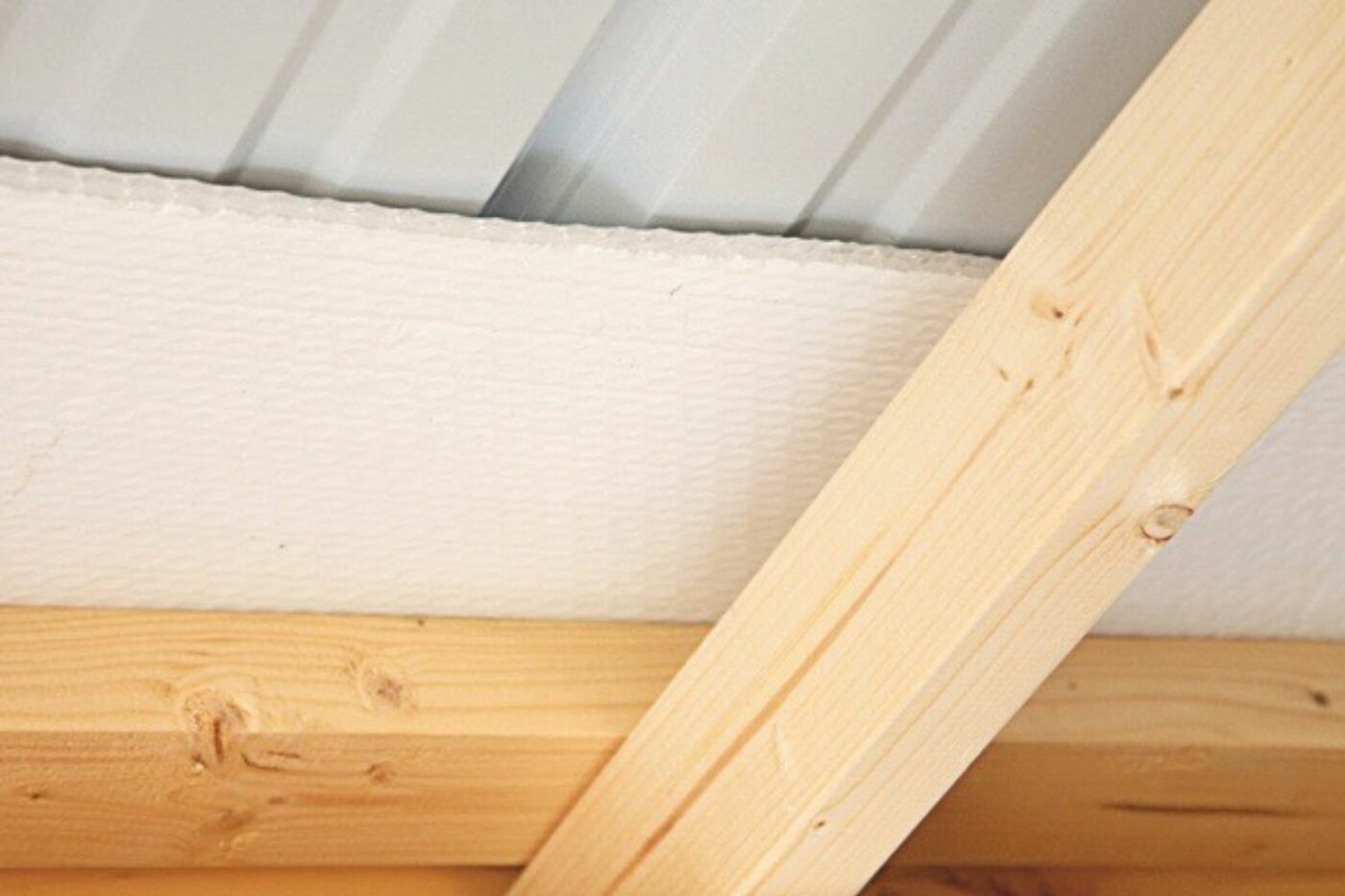
Although your coop should be well-ventilated, it should not be drafty. Cracks and small openings should be closed to keep snakes, mice, and other rodents from entering. Another important insulation factor to consider is ceiling insulation. Insulation in the ceiling helps to keep the coop cooler during the hot summer months.
If your coop has a metal roof, you’ll want to have insulation installed between the roof metal and framing during the construction of the coop. If your coop has an asphalt shingle roof, be sure to use Tech Shield roof sheathing as a barrier against excessive heat from the sun. Tech Shield sheathing usually provides adequate protection against heat, and no additional insulation is needed in the ceiling of your coop.
Lighting

Adequate lighting is important, especially if your chickens will spend a significant amount of time inside the coop. Since a chicken’s reproductive cycles are regulated by natural light, your chickens may stop producing eggs if they lack enough light.
Windows are the best way to let in natural light during the daytime. An artificial, soft, yellow light can be used inside the coop during winter months in the Northern Hemisphere with fewer daylight hours. However, a continuous light inside the coop is not recommended.
Artificial lighting should be used with caution as it can tamper with a chicken’s natural reproductive cycles. (You may be interested in this well-written article on using supplemental lighting to promote egg production)
Air Quality
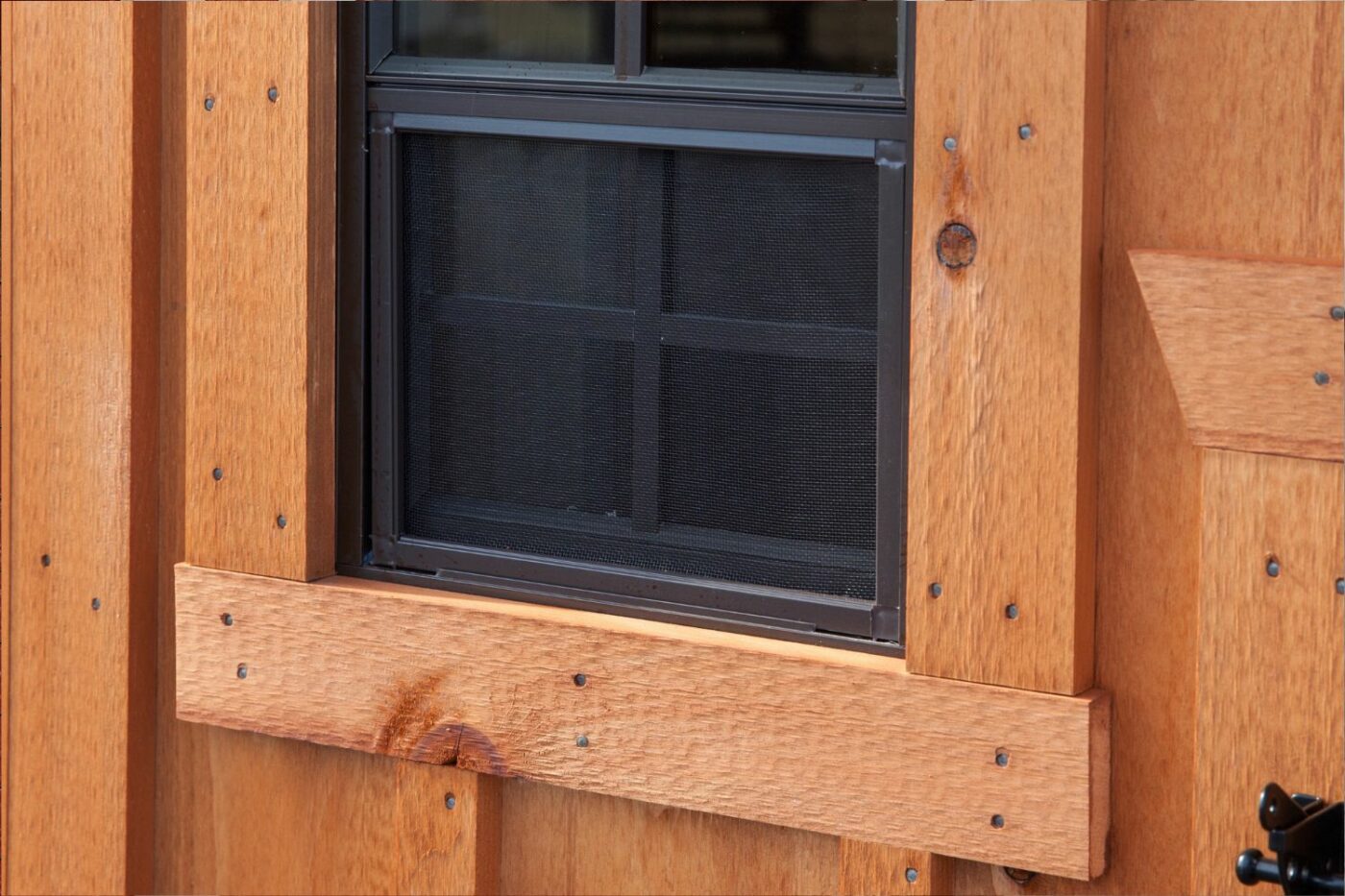
You should pay attention to the air quality in your coop. One of the biggest causes of poor air quality inside a chicken coop is ammonia. Ammonia is released from fresh or moist chicken feces and can be bad for the health of your chickens if it reaches high levels (read this helpful article about ammonia and chickens).
Providing adequate ventilation is a key component to controlling the levels of ammonia in the air inside a barn-style chicken coop. Vents should be positioned to remove contaminated air from the top of the coop without making the coop feel drafty. The best position for vents is usually near the top of the coop.
Litter Trays
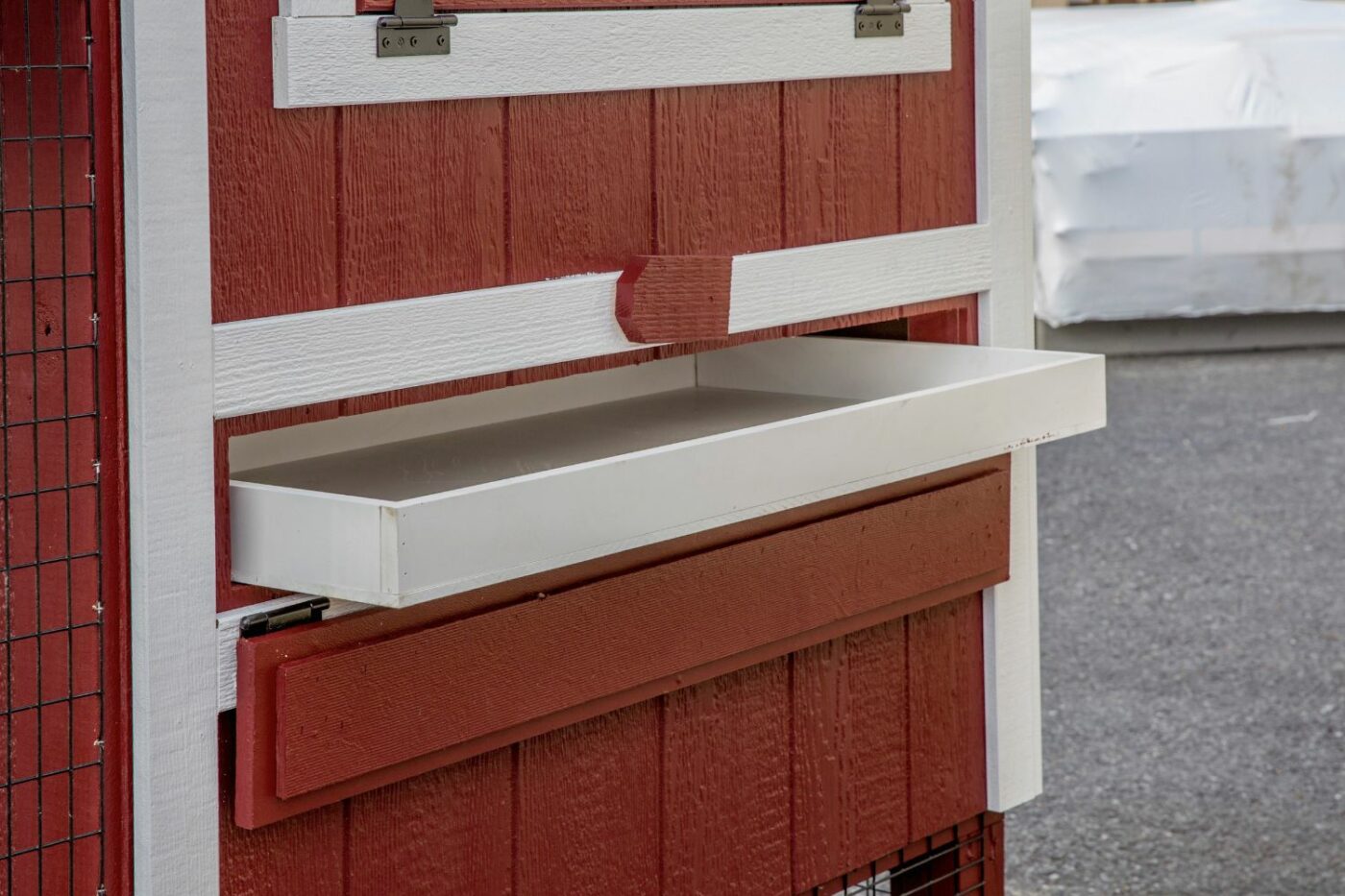
Chickens poop while sleeping, so using a litter tray under the chicken roost is a great way to make cleaning the coop easier. Chicken feces should be removed from the coop frequently to help control ammonia levels (see the section on ventilation).
A litter tray makes frequent removal of the majority of the waste that collects in a coop possible. The litter tray should be cleaned daily, or at least weekly as a bare minimum. Simply pull out the tray, scrape the chicken feces onto your compost pile, and replace it. You’ll be able to complete this step in minutes if you make it a part of your morning egg-gathering routine.
Tip: Line your litter tray with newspaper to make frequent cleaning super easy!
Raised Floor
One of the best materials for a chicken coop floor is plywood. A plywood floor can be raised off the ground to help in keeping the floor and bedding dry. A floor with airflow underneath will shed moisture more quickly than a concrete slab or dirt floor.
A raised plywood floor is also a very tight floor that prevents unwanted predators and rodents from entering. If your chicken coop is a storage shed with a plywood floor on runners, use a tight wire mesh instead of wood to close off the underside of the shed to intruders. A solution like black vinyl-coated wire is better than wood since it allows air to flow under the shed while still closing it off to intruders.
Raising the floor in a prefab chicken coop is an inexpensive way to promote the health and safety of the chickens in a wooden chicken coop.
Tip: A plywood floor should be covered with epoxy or a similar material to make cleaning easier.
Food and Water Supply
Last but not least, a well-functioning feeder and drinkers are some of the most important components of the interior of your coop. The feeder and drinkers should be kept away from the roost to prevent chickens from pooping in them while roosting. They can also be suspended off the ground a few inches so that they don’t collect as much bedding when chickens are scratching nearby.
Feeders and drinkers should be clean, well-stocked, and easily accessible to your chickens at times. Partially dehydrated or under-fed chickens are much more prone to disease and will be less productive.
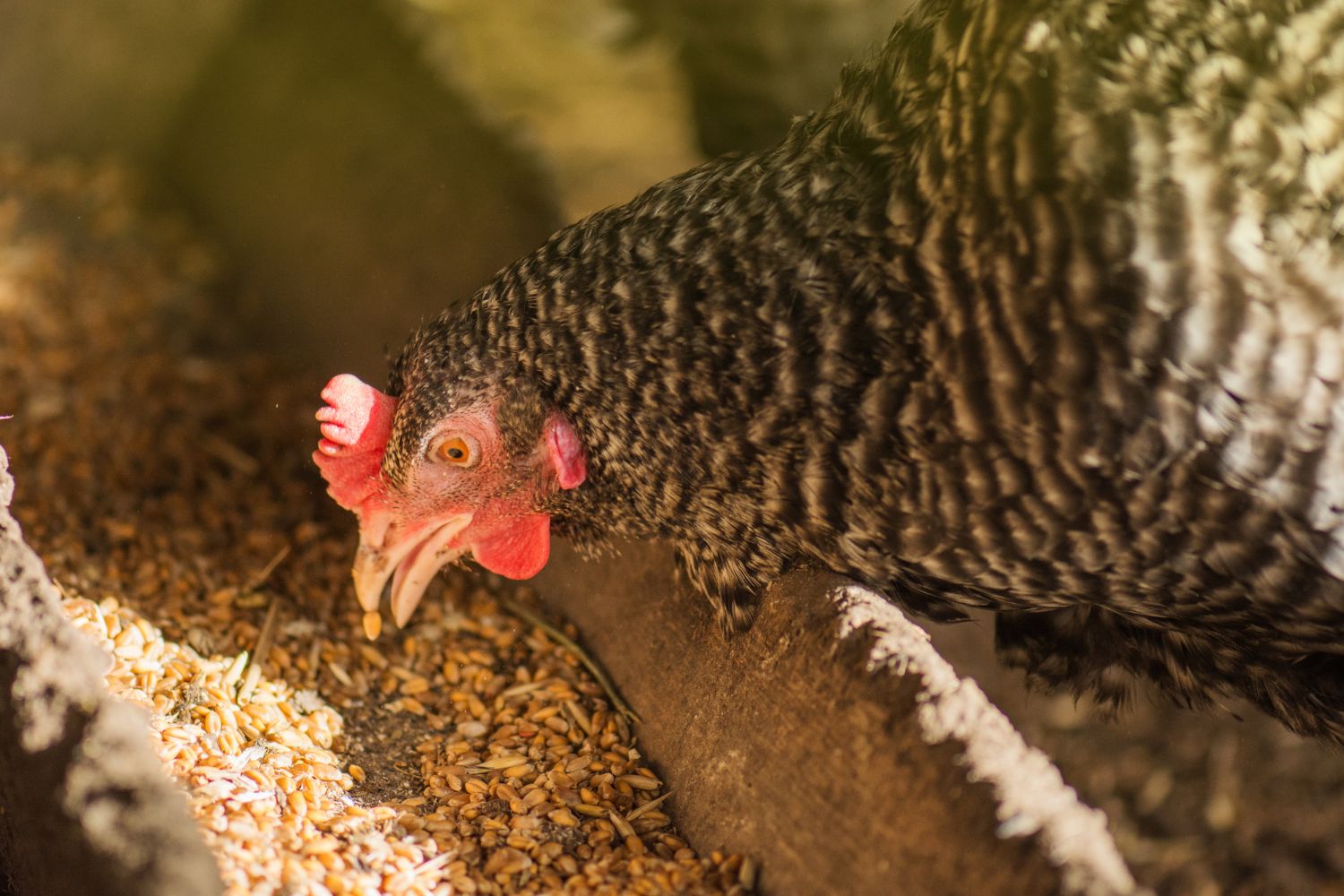
Bonus: Chicken Coop Size
Remember to consider the chicken coop size when planning the interior layout of your coop. An overcrowded chicken coop is detrimental to the health of your flock.
Are You Prepared for Success?
These 8 features should be high on your priority list when thinking about the interior design of your new coop. A chicken coop with a good design will make a significant contribution to the health and well-being of your flock and, in the long run, reduce the cost of raising chickens.
Conversely, keeping chickens in an old shed with a damp, dirt floor and little ventilation may bring with it a greater struggle to keep your flock healthy. A well-designed coop will also be easier to clean.
When shopping for your new coop, pay attention to the interior design and features to make sure you’re well-prepared for your chicken farming venture.
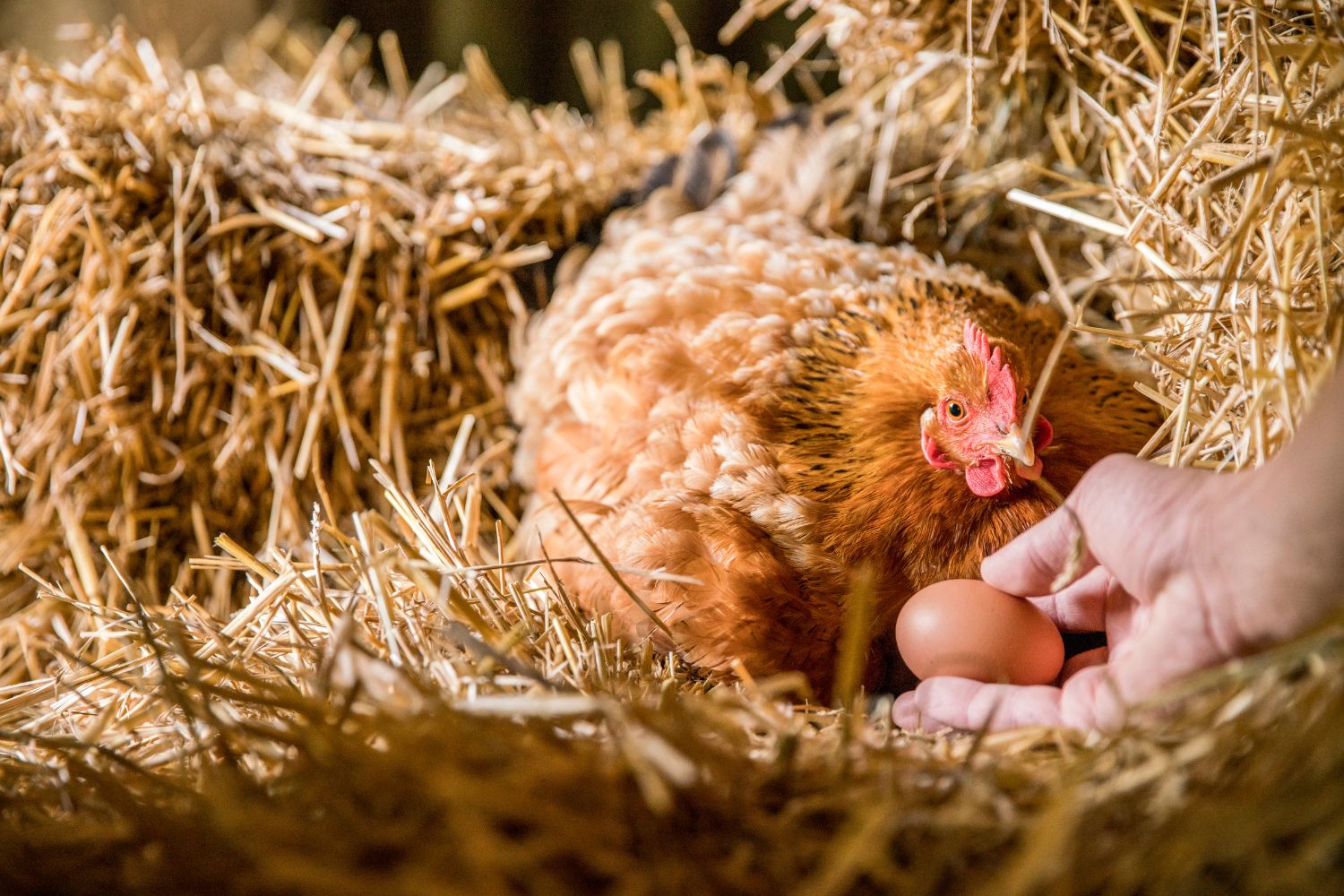
Check out this family’s dream backyard coop and see for yourself how a small chicken coop or a large chicken coop from The Hen House Collection could benefit you!


